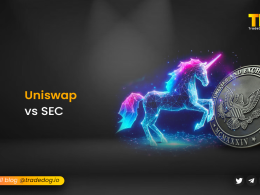Quick Links
In the crypto world, assets are easily accessible, but there are numerous risks to watch out for, such as cybersecurity threats. The industry has seen various threats, including hacks, scams, and exploits. Among these is the vampire attack.
A “vampire attack” in the context of blockchain refers to a situation where a new project or protocol, often a fork of an existing blockchain project, offers superior incentives or rewards to users compared to the original project. This can result in users migrating from the original project to the new one, effectively draining the original project of its user base and value. Despite having a negative connotation ‘attack’, it is now more like a marketing strategy than a malicious attack.
In the context of blockchain technology, a “fork” refers to a split in the blockchain’s transaction history, resulting in two separate versions of the blockchain. This can occur for various reasons, such as changes to the protocol’s rules or a disagreement among the community about the direction of the project. Often, the community misunderstands the utility of a project, focusing instead on rewards or freebies. This can lead to a misplaced trust in a project, which may ultimately result in financial losses.
Instances of Vampire Attacks
This phenomenon was evident in the case of Sushiswap and Uniswap. When Uniswap introduced its fork, Sushiswap, and its token, Sushi, the project garnered significant attention by promising higher yields than Uniswap. This was akin to a vampire attack, as it targeted specific pools of Uniswap. While the liquidity of Uniswap was adversely affected, Sushi gained considerable traction.
Blur made a strategic move to challenge the dominance of OpenSea in the NFT space, using a clever tactic. Blur offered a user-friendly experience to NFT traders with charging no gas fees to its users. Based on the level of activity, it generously offered free tokens/airdrops to its users. This aimed to make OpenSea seem less attractive and Blur successfully surpassed Open Sea in terms of level of activity and trading volume.
How are vampire attacks planted?
One interesting thing is “vampire” attacks, where new projects drain users and money from established ones by offering better rewards. This can change how investors feel, as they chase bigger rewards. These attacks usually happen when new projects give out free coins or rewards. People move from old platforms to new ones for the promise of more money. But competition isn’t all bad. It pushes projects to get better and offer more rewards, which helps the crypto world keep improving. So, while competition can be tough for existing projects, it’s important for making crypto better by encouraging new ideas and making projects work harder.
Effects of the Vampire Attacks
- During an attack, a project may lose liquidity or customers, affecting its operations and long-term competitiveness. To recover, it may need to be aggressive in winning back users.
- Intense competition can lead users to switch to seemingly attractive new projects. However, these projects may be scams or hacks, resulting in the complete loss of users’ funds.
Prevention of Vampire Attacks
- Vesting schedules and safeguarding liquidity may help.This involves lock-in periods that prevent users from quickly withdrawing liquidity after receiving incentives, ensuring their dedication to the platform.
- A dynamic reward structure that builds trust in users.To guard against less intense vampire attacks, crypto projects should focus on competitiveness, rewarding loyal users, and offering innovative features.
- By including DAOs or giving voting rights, user participation in governance is encouraged, leading to increased loyalty.
- Furthermore, security audits, community building, and reputation management strategies strengthen a project’s appeal and credibility, making it more resilient against competition.
Why can it be a good practice for users?
A vampire attack enables more robust competition among the projects ensuring users get the best deals, stopping projects from taking advantage of a captive market where users have little choice, charging unfair fees, or simply making a profit without reinvesting in better products or services. Vampire attacks can be the start of new projects that can increase yields and incentives available and are being widely adopted by projects these days as recently seen in Open Sea & Blur.









